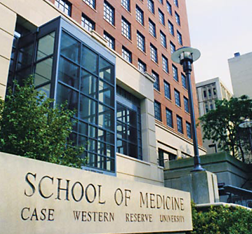 The spread of deadly Ebola in West Africa appears to be increasing and getting out of control, as a leading medical charity warns of over-stretched resources, and concerns are raised that it may spread to other continents. Meanwhile, European and American authorities suggest while the risk of spread is “low,” the situation remains volatile and requires constant vigilance.
The spread of deadly Ebola in West Africa appears to be increasing and getting out of control, as a leading medical charity warns of over-stretched resources, and concerns are raised that it may spread to other continents. Meanwhile, European and American authorities suggest while the risk of spread is “low,” the situation remains volatile and requires constant vigilance.
As of 23 July 2014, there have been over 1,200 reported cases of Ebola virus disease in West Africa, including 672 deaths, say the World Health Organization, making this the largest outbreak of Ebola in history.
Ebola virus disease – formerly known as Ebola hemorrhagic fever – is one of the world’s most virulent diseases. Without medical care, as few as 1 in 10 patients are expected to survive. Severely ill patients require intensive, supportive care.
During an outbreak, those at higher risk of infection are health workers and family members, and any other individuals with close contact to infected people and the bodies of dead victims.
Infection can be controlled through the use of protective techniques in clinics, in hospitals, in the home, and places where communities gather. These require health care workers to be able to identify the infection and be trained in barrier nursing methods such as correct use of masks, gowns, gloves and goggles, as well as equipment sterilization, routine use of disinfectant, and making sure infected patients do not come into contact with unprotected individuals.
Guinea seeing decline in cases, but rising in Liberia and Sierra Leone
In Guinea, where the outbreak began in February 2014, the number of cases has declined significantly, say Doctors Without Borders (MSF). However, in neighboring Sierra Leone and Liberia, the virus appears to be infecting more and more people.
After receiving no reports of new cases for 21 days, MSF has now closed its Ebola treatment center in Telimélé, in the west of Guinea. Twenty-one infected people were admitted to the treatment center over the 7 weeks it was open. Seventy-five percent of them recovered, a rate that the charity describes as “astonishing.”
Meanwhile, the leading medical charity says it is stepping up its response in the most affected areas, which are now in Sierra Leone and Liberia, but “with resources already stretched, health authorities and international organizations are struggling to bring the outbreak under control.”
There are also reports that dozens of health workers have died treating patients, and two American humanitarian workers, are currently fighting for their lives after becoming infected with the virus in Liberia.
One of them is Kent Brantly, 33-year-old doctor and father-of-two from Texas, who works for the charity Samaritan’s Purse. The other is Nancy Writebol, 60-year-old mother-of-two from North Carolina, who works as a missionary with Serving in Mission (SIM).
Bruce Johnson, President of SIM USA, told the UK newspaper MailOnline that both victims of the virus are entering a critical phase of their illness and they will know within the next few days if they are likely to survive.
Charity warns of ‘tsunami of destruction’ in Liberia
Mr. Johnson says the outbreak has the potential to become a “tsunami of destruction for the country of Liberia,” and calls for the international community to respond, as charities become overwhelmed.
 The situation is deteriorating rapidly in Liberia, with cases of Ebola now confirmed in seven counties, including in the capital, Monrovia.
The situation is deteriorating rapidly in Liberia, with cases of Ebola now confirmed in seven counties, including in the capital, Monrovia.MSF also reports that the situation is deteriorating rapidly in Liberia, with cases of Ebola now confirmed in seven counties, including in the capital, Monrovia:
“There are critical gaps in all aspects of the response, and urgent efforts are needed to scale up, particularly in terms of contact tracing, organizing safe burials, and establishing a functioning alert system,” they urge.
Meanwhile, Reuters reported on Wednesday that Liberian government officials say an isolation unit at Elwa Hospital in Monrovia is so overrun with cases of Ebola that health workers are having to treat up to 20 patients in their homes.
Efforts to build another unit were at first resisted by the local community, highlighting the fear and mistrust toward health workers trying to battle the disease with a straining health system across West Africa.
MSF describe Sierra Leone as the current “epicenter” of the outbreak – with 454 cases recorded so far. There are now 22 international and 250 Sierra Leone health workers currently dealing with the outbreak there.
Likelihood of spread outside of West Africa ‘low’
Reports that a man who arrived in Nigeria from Liberia by plane died of Ebola infection has sparked fears that the outbreak will spread to other continents. However, experts suggest this is unlikely.
In a press telebriefing on Monday, Dr. Stephan Monroe, deputy director of the National Center for Emerging Zoonotic and Infectious Diseases at the US Centers for Disease Control and Prevention (CDC), said there have been no reported cases of Ebola in the US, and the “likelihood of this outbreak spreading outside of West Africa is very low.”
He says that while it is possible someone infected with the virus in Africa could get on a plane to the US, it is unlikely the disease would spread to fellow passengers:
“The Ebola virus spreads through direct contact with the blood, secretions, or other body fluids of ill people, and indirect contact – for example with needles and other things that may be contaminated with these fluids,” he explains.
As in the current outbreak, most people who become infected with Ebola are those in close contact with people who have already caught the disease and are showing symptoms, he adds.
Nevertheless, says Dr. Monroe, as people do travel between Africa and the US, the American authorities still need to prepare for the possibility that a traveler sick with the virus will make their way into the country.
The CDC is sending out Health Alert Notices to remind health care workers in the US how to prevent spread of Ebola. These notices urge health workers to take travel histories of their patients, know the symptoms of Ebola (headache, fever, weakness, joint and muscle aches, vomiting, diarrhea, stomach pain, lack of appetite and in some cases bleeding), know how to isolate a patient suspected of having the disease, and then follow precautions to prevent spread, and most importantly, avoid contact with blood and body fluids of any infected persons.
The European Commission (EC) also assesses the current risk of Ebola spreading to Europe as low, since “most cases are in remote areas in the affected countries and those who are ill or in contact with the disease are encouraged to remain isolated.”
However, as in the case of the CDC in the US, the European Centre for Disease Prevention and Control (ECDC) is keeping the situation under review and has issued several Rapid Risk Assessments that give guidance on how to proceed if suspected cases are detected in European Union (EU) countries.
“To date no cases have been detected among returning travellers in Europe,” they said in a news briefing on Wednesday.
Need to scale up international response
The EC is allocating an additional €2 million to respond to the Ebola epidemic in West Africa, bringing the Commission’s total aid to funding the fight against the current West African epidemic to €3.9 million.
Teams of specialists from both the US and countries in Europe have been deployed to the affected countries since the outbreak began. They are helping humanitarian partners and local health authorities carry out assessments, assist with data collection and management, coordinate response, and provide health education.
However, Kristalina Georgieva, EU Commissioner for International Cooperation, Humanitarian Aid and Crisis Response, says, “The level of contamination on the ground is extremely worrying and we need to scale up our action before many more lives are lost.” She calls for a “sustained effort from the international community to help West Africa deal with this menace.”
Meanwhile, Medical News Today recently reported how, through a statement published in The Lancet medical journal, researchers working in Sierra Leone are also calling for improvements to health care resources, diagnostic systems and disease surveillance to help tackle the growing Ebola crisis.
Written by Catharine Paddock PhD
http://www.medicalnewstoday.com/articles/280395.php







